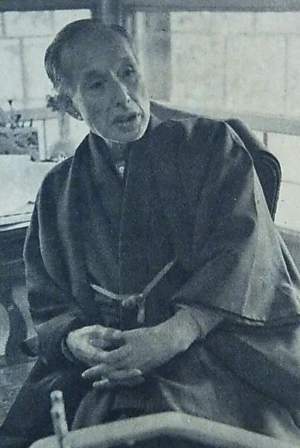Biography
(No Information)
Filmography
all 1
Movies 1
Writer 1
Information
Known ForWriting
GenderMale
Birthday1888-08-06
Deathday1961-10-29 (73 years old)
Birth PlaceTokyo, Japan
FatherNagayo Sensai
SiblingsIwanaga Yūkichi, Matarō Nagayo, Shōkichi Nagayo
CitizenshipsEmpire of Japan, Japan
AwardsYomiuri Prize
This article uses material from Wikipedia.
Last updated:
 Yoshiro Nagayo
Yoshiro Nagayo- Filmography
- Information
